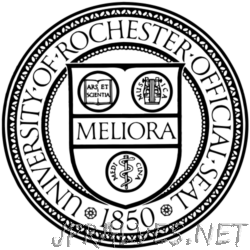Other

“Researchers develop hybrid phase-change memristors that offer fast, low-power, and high-density computing memory. By strategically straining materials that are as thin as a single layer of atoms, University of Rochester scientists have developed a new form of computing memory that …

“The seemingly physics-defying properties of quasiparticles could be harnessed for applications ranging from non-destructive imaging to computer-chip manufacturing. An international team of scientists is rethinking the basic principles of radiation physics with the aim of creating super-bright light sources. In …

“Rochester physicists will study heat and energy flow in quantum mechanics to help develop more efficient quantum computers. At the incredibly tiny quantum level, the laws of physics begin to act differently and the usual rules don’t apply, including …

“Rochester scientists will develop machine learning to help predict, design, and improve laser-fusion implosions for inertial fusion energy. Researchers from the University of Rochester and Hewlett Packard Enterprise believe artificial intelligence can help scientists take the next step toward creating …

“Dynamic shell formation has been demonstrated experimentally for the first time at the University of Rochester’s Laboratory for Laser Energetics. Fusion, which replicates the same reaction that powers the sun, has long been viewed as an ideal energy source …

“A system using photonics-based synthetic dimensions could be used to help explain complex natural phenomena. Scientists have made an important step toward developing computers advanced enough to simulate complex natural phenomena at the quantum level. While these types of simulations …

“Physicist Machiel Blok develops techniques to improve superconducting circuits, which may help create more powerful quantum computers. In the quest to unlock the power of quantum computers, scientists such as Machiel Blok study information processing at the infinitesimally small level …

“A new grant will allow Rochester researchers to leverage bacteria and nanomaterials to mimic photosynthesis and produce clean-burning hydrogen fuel. As the world faces an increasing demand for clean and sustainable energy sources, scientists are turning to the power of …

“Rochester researchers achieve strong optical-acoustic interactions with long-lived acoustic waves. When optical beams, consisting of photons, travel through fibers, they cause vibrations that generate acoustic waves, consisting of phonons. The phenomenon, called Brillouin scattering, has been harnessed by researchers to …

“The secret, a University of Rochester optics professor explains, is to harness the power of metals. Silicon, the standard semiconducting material used in a host of applications—computer central processing units (CPUs), semiconductor chips, detectors, and solar cells—is an …

